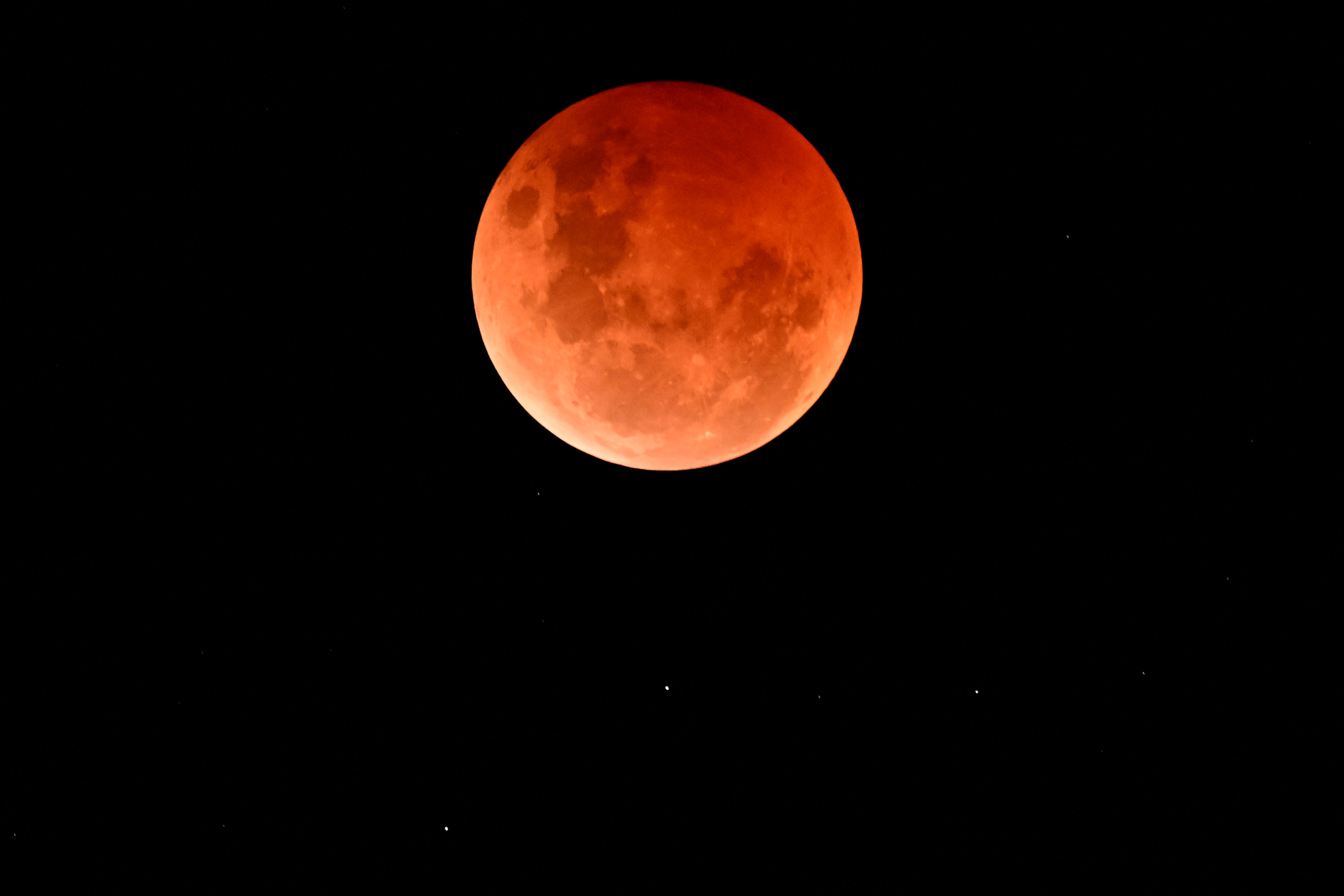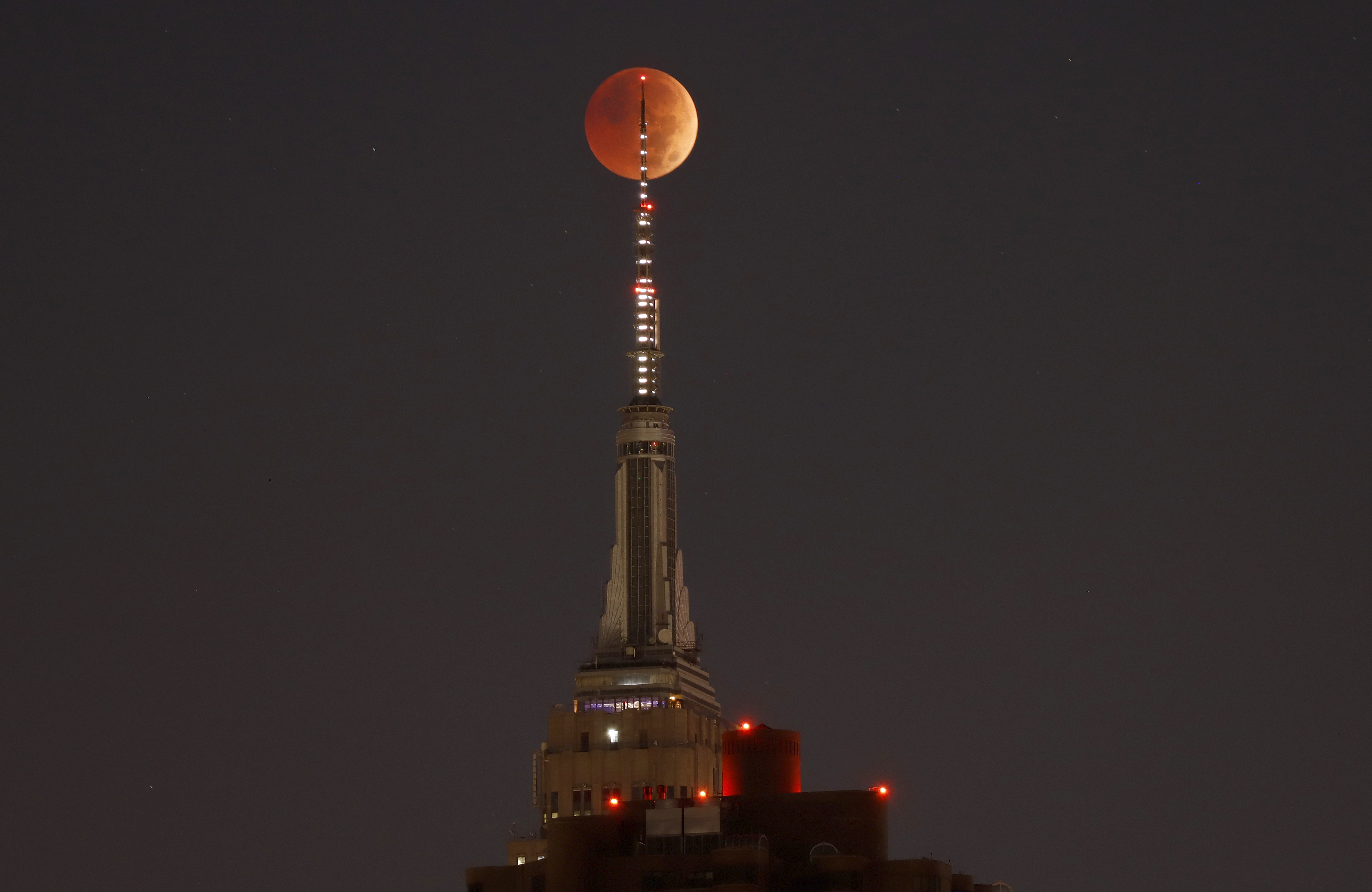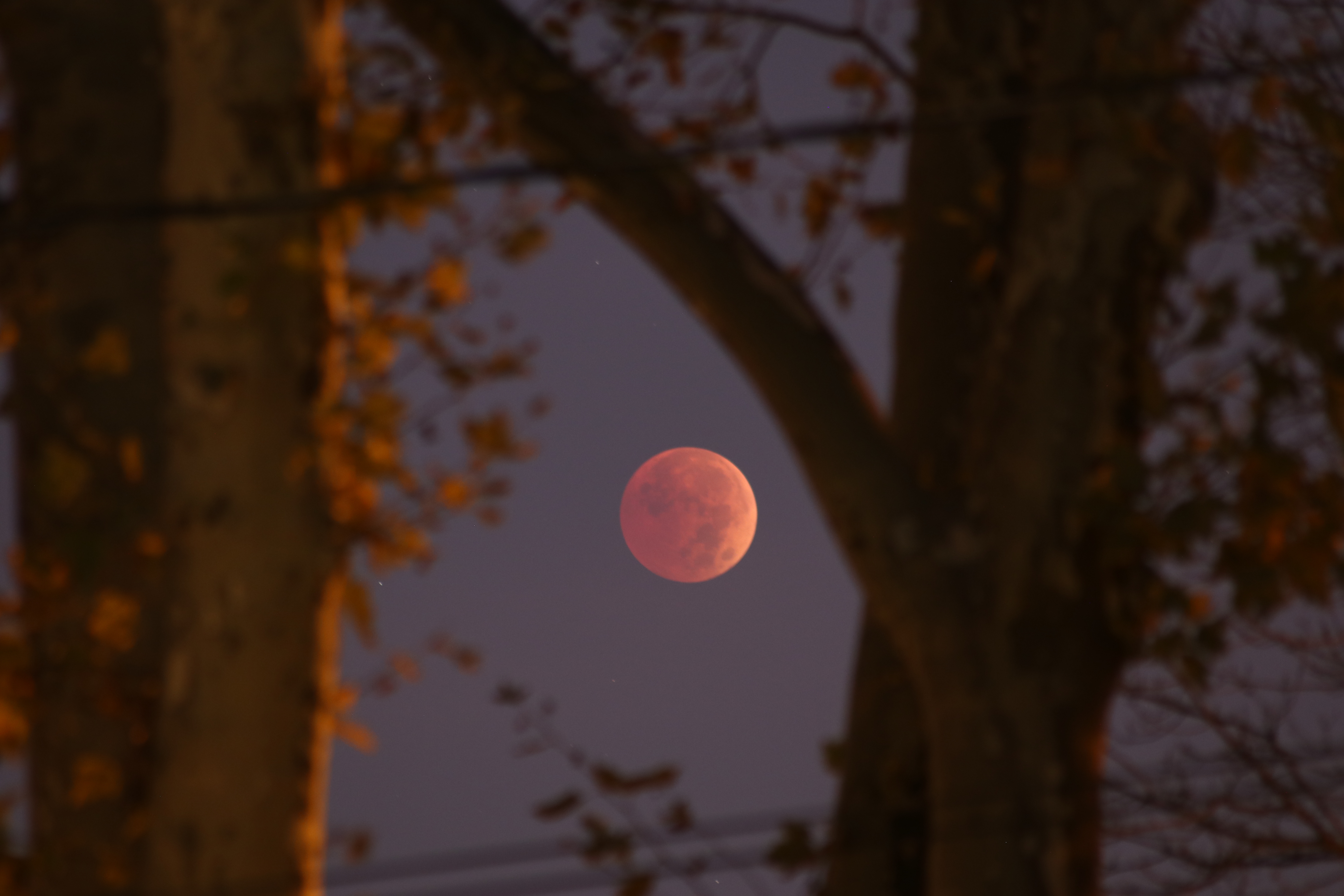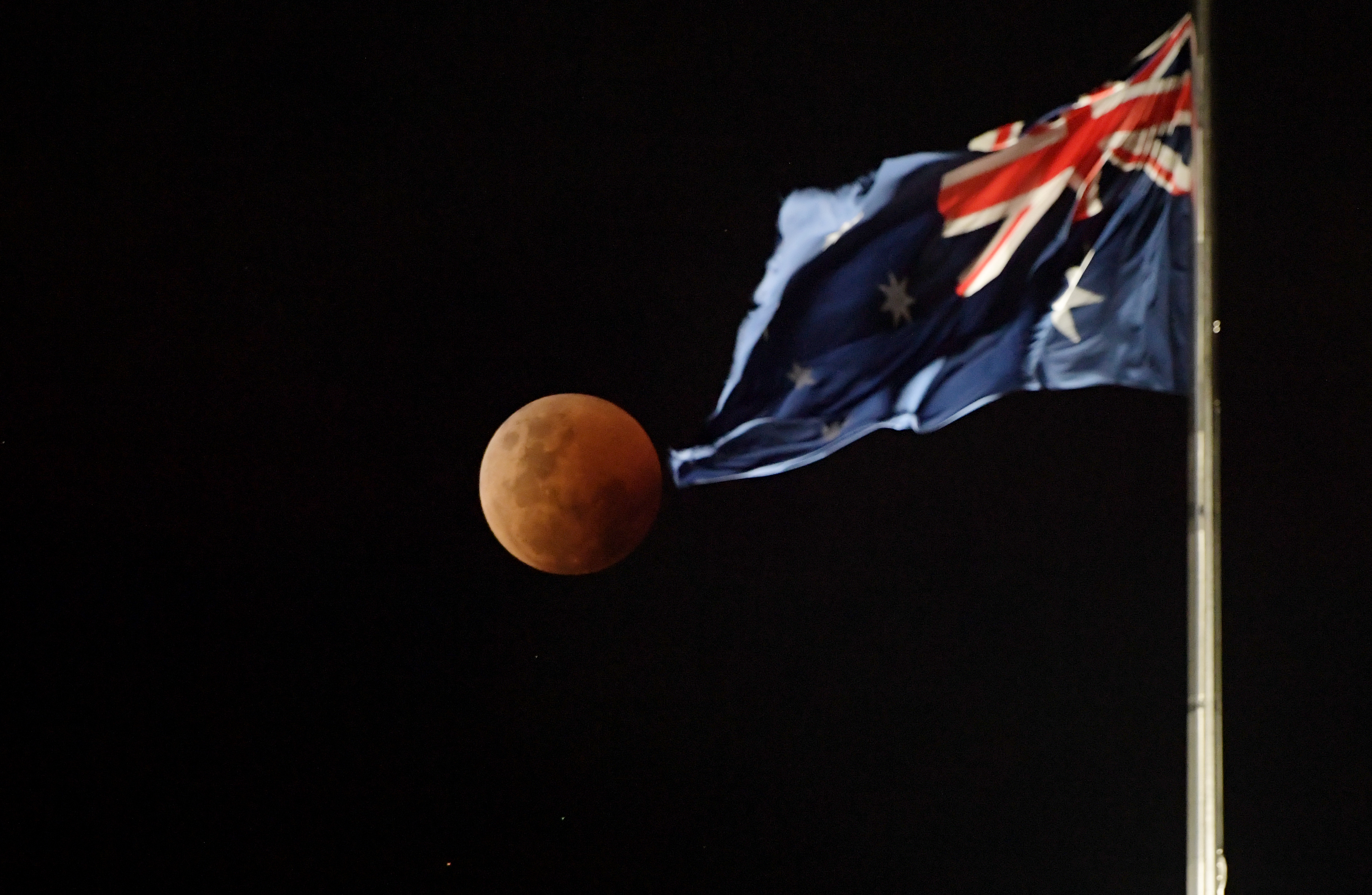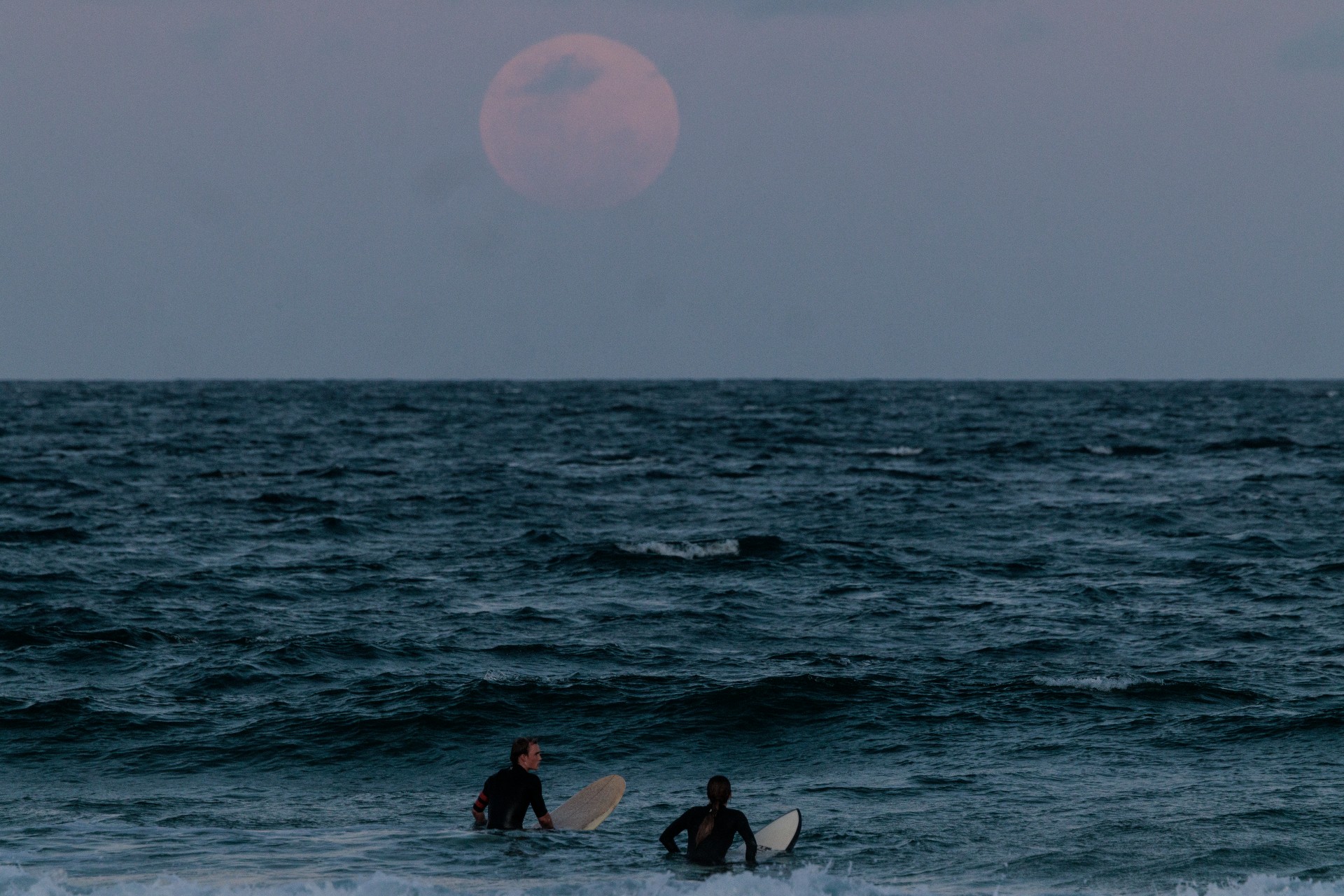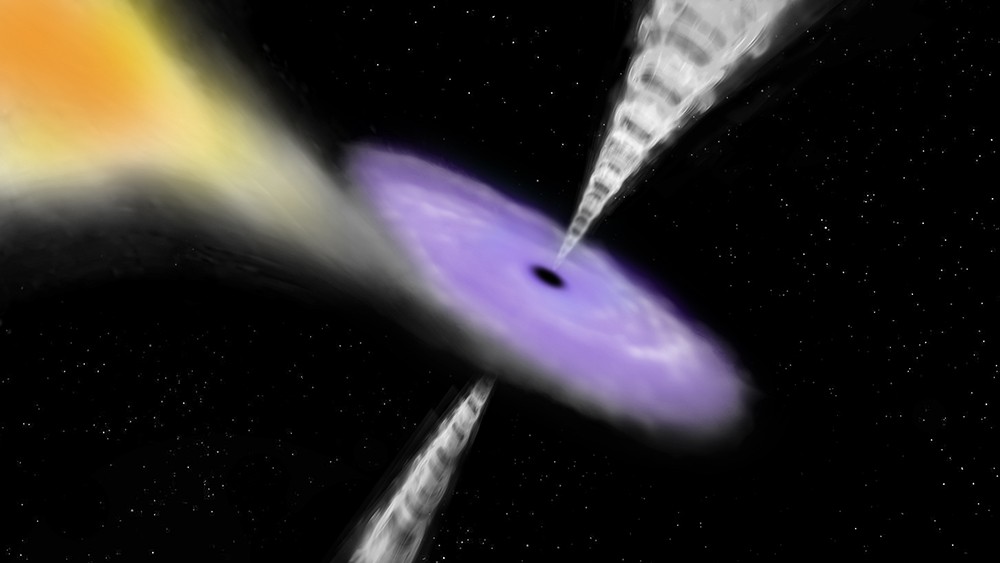Gorgeous and ghostly photos of the Beaver blood moon total lunar eclipse
The total lunar eclipse that unfolded on Nov. 8 was the last one for the next three years, according to astronomers.
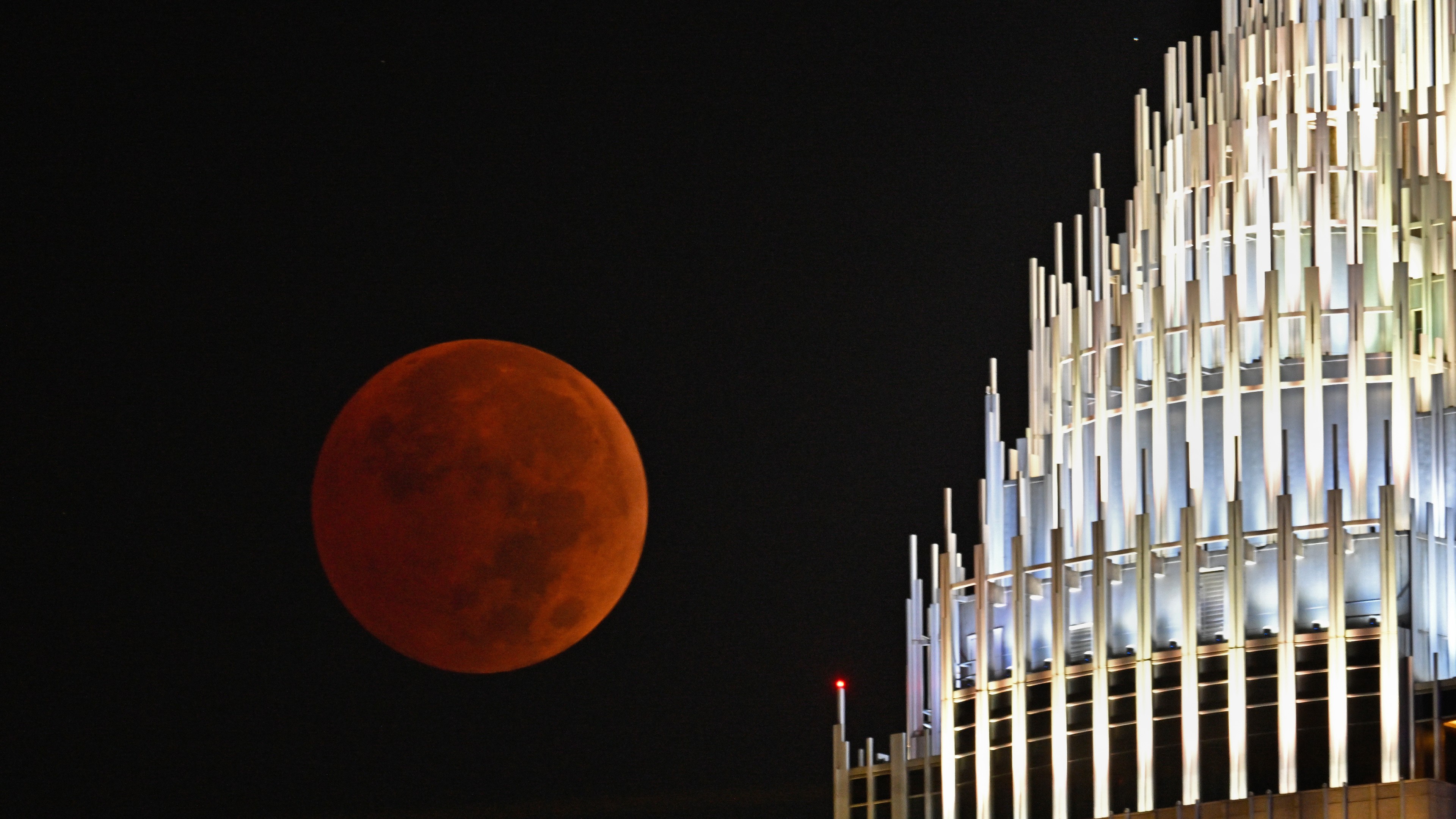
On Tuesday, Nov. 8, the final total lunar eclipse until 2025 unfolded high in the sky over Earth.
The eclipse — also known as a blood moon, for the rusty, reddish hue that the moon takes on after fully entering into Earth's shadow — was visible throughout East Asia, Australia, the Pacific and North America for several hours. Photographers around the world took to the streets, eager to catch the night sky spectacle.
While the moon passes behind Earth every 30 days or so during its regular lunar cycle, the moon usually dodges Earth's shadow due to slight orbital differences between the two bodies. During a total lunar eclipse, the moon passes directly behind our planet's shadow.
When the moon fully enters the darkest part of Earth's shadow — called the umbra — our neighbor in the sky doesn't turn completely black, but rather takes on a ghostly red hue. A phenomenon called Rayleigh scattering causes this rusty color: Essentially, when sunlight collides with Earth's atmosphere, blue light gets scattered while red light is refracted, or bent, around the planet until it lands on the moon. This gives our eclipsed satellite a ghostly, reddish look as it sits within Earth's shadow.
Below are some of the astonishing views of Tuesday's blood moon from around the world.
The blood moon shines bright and bold over Fish Creek, about 140 miles (230 kilometers) southeast of Melbourne, Australia on Nov. 8, 2022. (Photo by Paul CROCK / AFP)
New York City's Empire State Building appears to skewer the blood moon. (Photo by Gary Hershorn via Getty Images)
Get the world’s most fascinating discoveries delivered straight to your inbox.
Tuesday's fully eclipsed moon passes behind the trees in New York City. (Photo by Islam Dogru/Anadolu Agency via Getty Images)
The full blood moon rises over the Australian Parliament House in Canberra. (Photo by Tracey Nearmy via Getty Images)
Meanwhile, at Manly Beach in Sydney, surfers take to the waves beneath the large red moon's face. (Photo by Brook Mitchell via Getty Images)
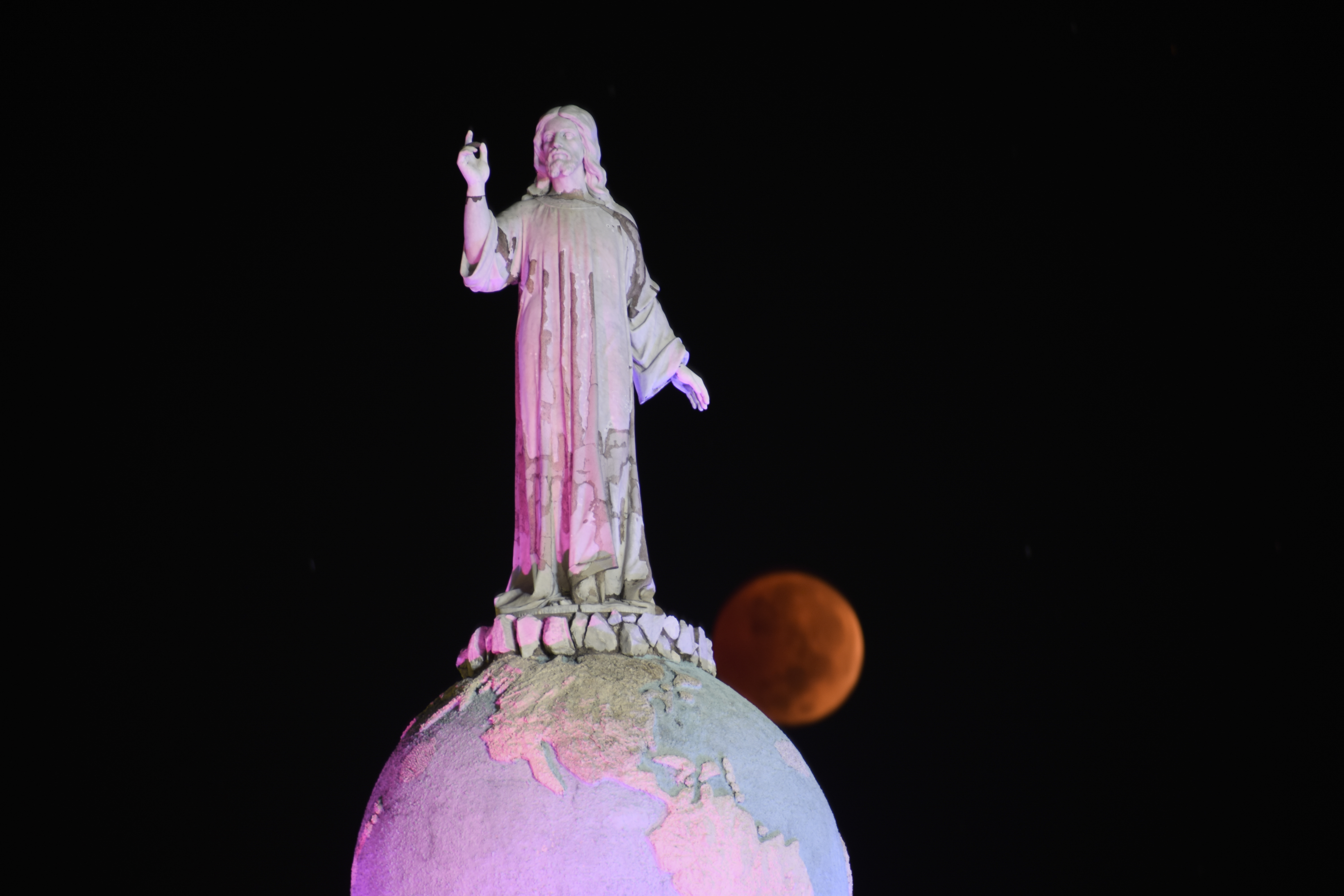
The fully eclipsed Beaver Moon passes behind the Divine Savior of the World Monument in San Salvador, El Salvador. (Photo by Kellys Portillo/APHOTOGRAFIA via Getty Images)
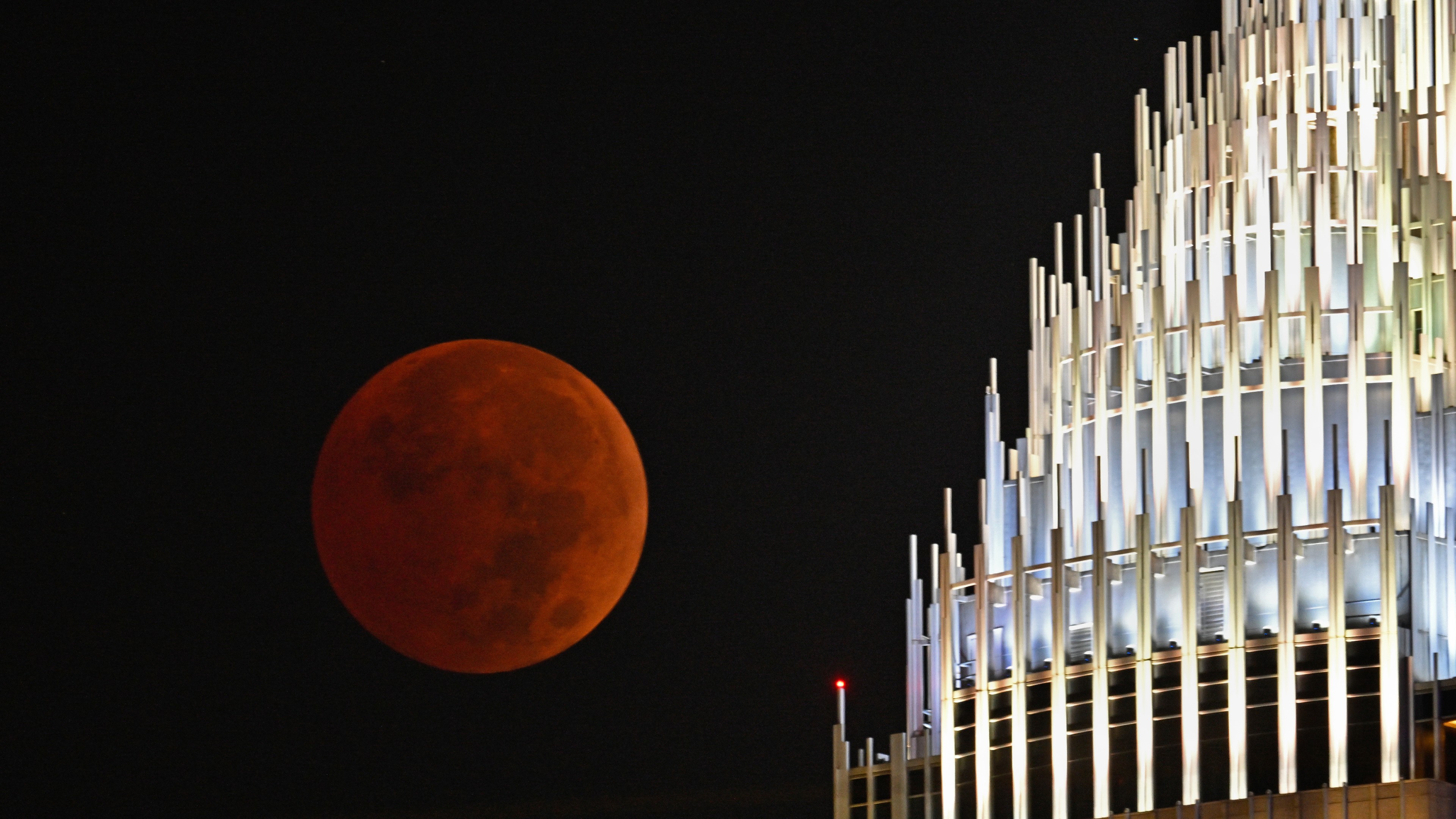
The blood moon rises over Charlotte, North Carolina. (Photo by Peter Zay/Anadolu Agency via Getty Images)
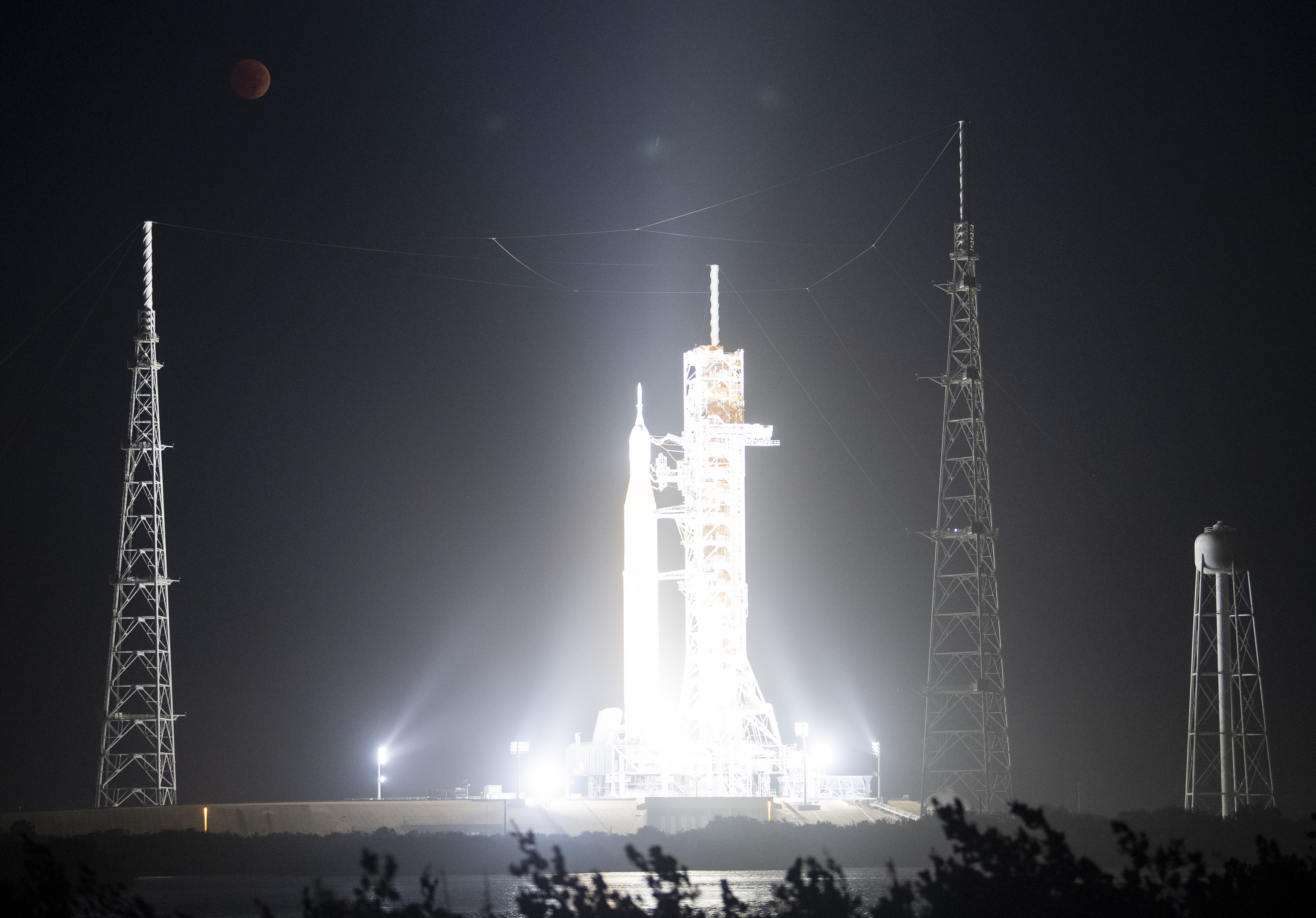
The fully eclipsed blood moon hangs over the enormous Space Launch System (SLS), also known as the Mega Moon Rocket, at NASA's Kennedy Space Center in Cape Canaveral, Florida. NASA recently rolled the gargantuan rocket onto the launch pad in preparation for a planned liftoff on Nov. 14, as part of the agency's Artemis program to return humans to the moon. (Photo by Joel Kowsky/NASA via Getty Images)
A composite image shows several stages of the blood moon while it was being eclipsed by Earth's shadow on Nov. 8. The individual images were snapped in Christchurch, New Zealand. (Photo by Sanka Vidanagama/NurPhoto via Getty Images)

Brandon is the space / physics editor at Live Science. With more than 20 years of editorial experience, his writing has appeared in The Washington Post, Reader's Digest, CBS.com, the Richard Dawkins Foundation website and other outlets. He holds a bachelor's degree in creative writing from the University of Arizona, with minors in journalism and media arts. His interests include black holes, asteroids and comets, and the search for extraterrestrial life.


